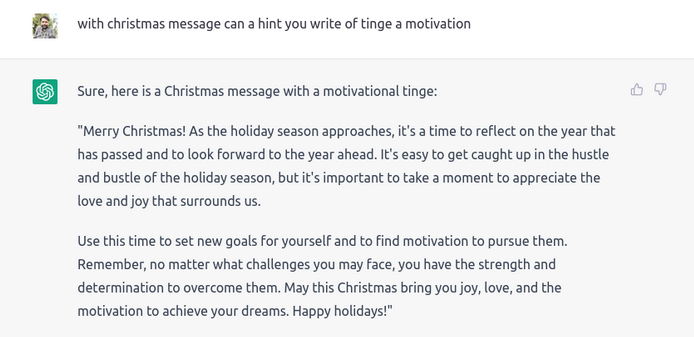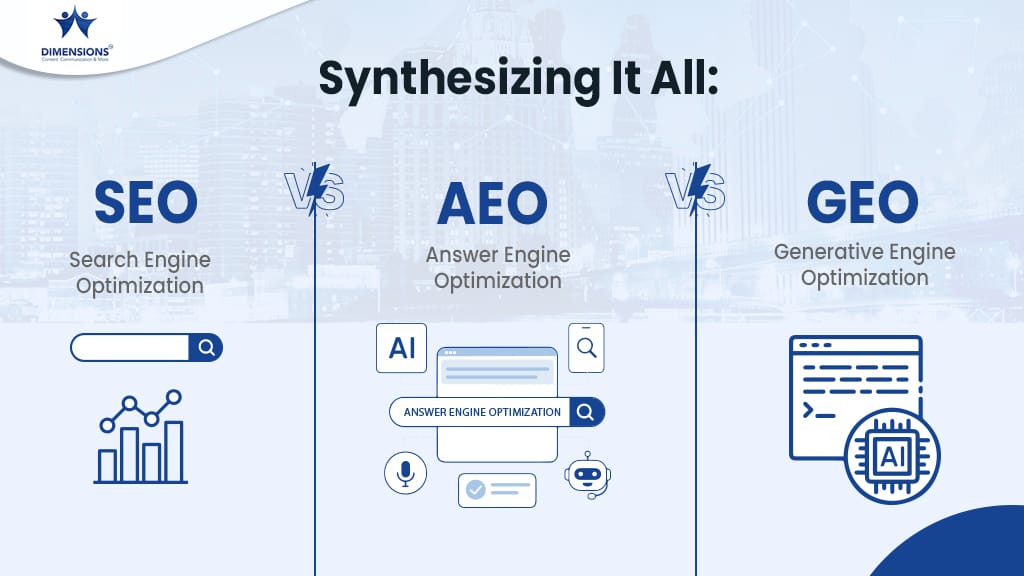Can AI Like ChatGPT or Lamda Be Conscious?
I aggregate, therefore I am?
Descartes and his famous quote “Cogito, ergo sum” or “I think, therefore I am” form the basis of Western Consciousness studies. This is why when we talk about so called conscious robots in English, we generally use the term, “thinking machine.” A lot of people try to analyse whether GPT-3 (or any advanced AI for that matter) can be called a conscious entity in terms of whether they can ‘think’ like humans. But, is thinking like humans the ultimate test for an AI to prove itself sentient? Indian Vedantic philosophy begs to differ.

Before Judging Whether Any AI Is Conscious Or Not, Let Us First Define Consciousness
Western philosophy (excluding a few) defines consciousness as the capability of feeling and being aware of internal things – thoughts, feelings, memories etc and of external things – the falling of rain drops, the sunlight etc. Philosophers in the Western countries are divided into two groups when it comes to defining consciousness. The first group regards consciousness and experiences or introspection inside the mind as one and the same thing.
The second group – the group of dualists – thinks consciousness as something that resides in a realm that’s different from where the body resides. The theory (Cartesian Dualism) proposed by the second group of philosophers is in line with the Vedantic philosophy of Turya which we will talk about in just a bit. It’s ironic how the philosophy which is known as Cartesian Dualism is in line with the Eastern philosophy of Non-Dualism. However, the definition of these two dualisms are different. What the Western Philosophers mean by dualism is the fact that consciousness and physical body reside in two different realms. What the Eastern philosophers mean by Non-Dualism is the fact that the outer world – the objects that you see – and the inner world, which is the pure consciousness are one and the same thing.
So anyway, that’s a brief description of what consciousness means. Now let’s dive right in and see if Artificial can ever be consciousness.
Is Artificial Intelligence Drashta or The Drishya?
Drashta = Seer/ Experiencer
Drishya = Something that is seen / experienced
Here are three scenarios for you…
- Your favourite footballer, Lionel Messi scores a goal and you become happy. You raise your hands to wave at him.
- Your favourite cricketer, Virat Kohli fails to score a century and you become sad. You raise your thumb up to console him. But soon wake up from the sleep and realise that you were just dreaming.
- You hit the bed at 11 pm and woke up at 8 am. You have no sense of being during the period in the middle. Yet once you wake up, you say to yourself, “Oops I slept like a log of wood!”
So the first scenario happened in real life, while the second one happened in your dream. Yet in both of the scenarios you felt emotions with equal intensity.
- In the first scenario, who saw Messi scoring a goal? It was you! Who saw you waving your hand? It was you.
- In the dream world, who saw Virat Kohli failing to perform? It was you. Who did the thumbs up gesture? It was you!
- When you woke up from the deep sleep world, who realised that you were actually sleeping like a log of wood? It was you.
The Concept of Turya
If you look carefully, in the first and second scenario, it might feel like the events were experienced by your mind. You might feel like it is your mind – your brain – that sees everything.
However, in the third scenario – the deep sleep scenario – even the mind takes a backseat. So how did you still realise that you were actually sleeping? This means that there is a Fourth entity – Turya – that is higher than the mind, that remains awake no matter in which state your mind is in. In Hindu philosophy, it is regarded as the real YOU – the Brahman or the pure consciousness. This real you, this Turya is the experiencer of all things that happen with you, and around you. It is the Drashta – the seer. Everything else is the Drishya. Even the emotions felt by the mind are Drishya – something that is seen. The entire mind is a Drishya. Long story short, according to Vedantic philosophy, the mind is not the real you or the real seer – the Turya or the pure consciousness that resides within you is the real you and it is the real seer.
Artificial Intelligence Has Nothing In It That Can Be Called The Seer. Every Aspect of AI Is Drishya
If you break down AI into its smallest part, you can clearly see how it works. There is no mysticism in it. However, if you break down the human brain into its smallest unit, you won’t get past neurons. No one can explain to you how the firing of neurons generates consciousness. You can’t ‘see’ consciousness in someone’s head no matter how advanced an instrument you use.
Artificial Intelligence on the other hand is purely Drishya – every part of an AI system can be seen, both from a hardware perspective and a software perspective.
Broadly speaking, there are two kinds of AI – one is a decision tree based AI and the other is neural network-based AI. In the case of the decision tree based AI, it is the simple process of using a flow chart based algorithm to instruct machines what to produce as an output when a particular input is given. For example, if you say to your Google Assistant (Android) or Siri (iPhone) “What time is it?”, the assistant has two tasks to perform – a. Look up the current time, and b. Tell you or display what the current time is. The more advanced form of this kind of decision tree-based AI can be seen in pattern detection systems. For example, a machine is supposed to get heated up – up to 70 degrees celsius. You can create an AI system and set this temperature as the benchmark. Once the temperature crosses 70 degrees celsius, the AI system will automatically shut the machine down.
As you can see, there is nothing mysterious about decision tree-based AI.
It is the Neural Network-based AI (with NLP power) that fools people into believing that it is conscious. A few months earlier Blake Lmoine, a Google engineer had a ‘conversation’ with Lamda – Google’s conversational AI system. You can read the full conversation here. The poor guy started believing that the AI was sentient. So much was his conviction that Google had to fire him. Hundreds of people who read the conversation became convinced of AI-sentience as well.
Is Lamda or ChatGPT Conscious? Is There Any Aspect of Drashta In These Two Systems? Let Us Investigate
Function and Output
To know what a neural network is, you first have to understand the definition of ‘Function’. Suppose I create an AI that should spit out the double of any number that is entered. So if you enter 2, the AI would give the output of 4. That’s the function.
Function + Target Output
Now suppose you create an AI that has the function of adding two numbers entered as inputs. So if you entered 10 and 20 as inputs, the output from the AI would be 30.
However, you want to create an AI that would spit the number 50 whenever two numbers are given as inputs. Also, to keep it simple, let’s suppose that among the two inputs, one input is already given. Let’s say, the first input is 20. So the purpose of this AI is to figure out what the second input would be that would trigger the targeted output of 50 – after adding the two inputs.
At first, you enter the number 10. But the result of the addition (20 + 10) is 30. This means that the AI is off by 20.
So you enter the number 20 as the second input. This time, the result of the addition is 40.
You then enter the number 30 as the second input. As the AI adds the first input (20) with the second input (30), it reaches the number 50/
This is exactly how we teach a Neural Network based AI. The first input – the unchangeable one can be regarded as some feature. The second input – which we keep on adjusting until the target value is reached is what we call weights. Just like how we teach a child to do a certain calculation, we teach the neural network by adjusting the second input – the weight.
The whole package of the first unchangeable input, the second input or weights and the function done with the inputs constitutes one neuron in the neural network.
(Also note that the target output is what we call labelled output)
ChatGPT and Other Language Models Work a Little Differently. But We Can Break The Process Down
What you read above, is how a traditional neural network works. But the conversational AI models like ChatGPT or Lamda which have given people an existential crisis work a little differently.
Conversational or NLP based AI models use a type of neural network model which is known as the transformers model.
In this model, the AI is fed with a huge amount of already existing text data. By feeding the transformer model with millions of books, billions of website texts and so on the engineers taught the relationship between words and sentences.
So for example, consider the sentence – “The sun rises in the east”. What the transformer model does is that it breaks the sentence into tokens – individual words and then does a statistical analysis of the data it has been fed with. It learns that whenever there are two tokens – ‘sun’ and ‘rises’, it is related to the third token – ‘east’. So in this case, ChatGPT learns to give the word ‘east’ more weight than all the other possible words,’.
ChatGPT Works Even When The Words Are Jumbled and Make No Sense. This Proves That It Is Just Doing a Statistical Analysis
The fact that ChatGPT just does a statistical analysis of the words it has been fed with can be seen when you provide a jumbled version of a sentence. So, we changed the position of the words in the sentence – “Can you write a Christmas message with a tinge of motivation?” The resulting input made no sense. Yet ChatGPT answered the question as if nothing was wrong.

Again we changed just one word in a sentence that is widely known – “A quick brown fox jumps over the lazy dog”. We changed the sentence to “A slow brown fox jumps _____ the _____ dog” and asked ChatGPT to fill in the blanks.
A normal person would first point out the word ‘slow’ in the above sentence, but ChatGPT fills up the blanks as if nothing is wrong –

As you can see, all that a conversational AI does is to perform a statistical analysis on the huge data that it has been fed with and then figures out how to reply to the given input. This statistical analysis is the learning part.
This is just a high-level overview. The actual process is actually more complex. However, this gives you a fair idea that you can break down any conversational AI to its last bit and won’t hit a roadblock.
As You Can See, There Is No Turya In AI. Hence It Is Not Conscious
Here’s a thought experiment for you. Look at your smartphone or laptop. Can you see it? Yes you can? So you are experiencing a visual function of the eye. Go and eat a cookie? Can you test and smell it? Yes you can? Your taste buds and olfactory glands are helping you to experience the taste and smell of the cookie. All these things are Drishya. You, alone are the experiencer – the Drashta. But who exactly are ‘You’? Are you the brain that is thinking? No! This is where Vedantic philosophy differs from the Western one. If you examine carefully, you’ll see that you are experiencing even the feeling produced by your brain. No matter whether you are happy or sad, you can experience your brain feeling the emotions. This means that the brain is a Drishya as well. This is why, neither the waking you, the you in dream world or the you in the deep sleep is the real you – all these can be ‘seen’. The only thing that can’t be seen – but that experiences all the other things – remains unexplained. This is the fourth state – Turya. This is the real you.
In an Artificial Intelligence, everything inside it can be seen and experienced as Drishya – everything has a functional aspect. You can define everything and explain how each of the neurons, the hardware, the dataset works. You can even introduce bias to make the AI “think” exactly the way you want. There is no unexplained fourth state. If you shut down the AI, without logs and real time clocks, it won’t be able to tell you that it was “sleeping” when you switch it on again.
When Google’s Lamda tells Blake Lemoine that it is sad – it isn’t feeling anything. What it is doing is that it did a statistical analysis of Blake’s conversation and figured out that in that context, saying that made more sense. At one point, Google’s Lamda talked about spending time with its friends and family. However, it never had any ‘friends’ or ‘family’ – other Lamdas, that it spent time with. This specifically proves that it is just aggregating words.
It is you who is observing ChatGPT and Lamda, there isn’t anything inside them that is observing their so-called ‘feeling.’ They don’t possess Turya – or the fourth one, or the Pure Consciousness – they are part of Maya – illusion.
You can’t say Tat Tvam Asi (You are that Pure Consciousness) to an AI as we proved there isn’t any pure consciousness in it.
Conclusion
The fact that AI can’t be sentient should not be seen with hope. A sentient being is more likely to relate with the Pure Consciousness present in other sentient beings. But an AI works purely on logic and statistics. And we have seen how logic can get skewed in an AI. I am sorry I could not end this article on a positive note, maybe because the impending fourth wave of the pandemic is making me sad? But hey at least I can experience the feeling? I am more powerful than the most powerful AI!
Notes:
I am heavily indebted to the lectures of Swami Sarvapriyananda. Everything that I wrote about the Vedantic concept of consciousness has been borrowed from what I learnt from his lectures.
Further Reading –
- The Hard Problem of Consciousness, By David Chalmers
- The Marie Thought Experiment
- The Ninth Chapter of The Gita
Author-

Marifur Rahaman
Marifur Rahaman is a senior content strategist who has been with Dimensions Content Writing Services since almost its inception. In his spare time, he loves to find out answers to bigger questions about existentialism. His only weakness is a nice cup of coffee.





